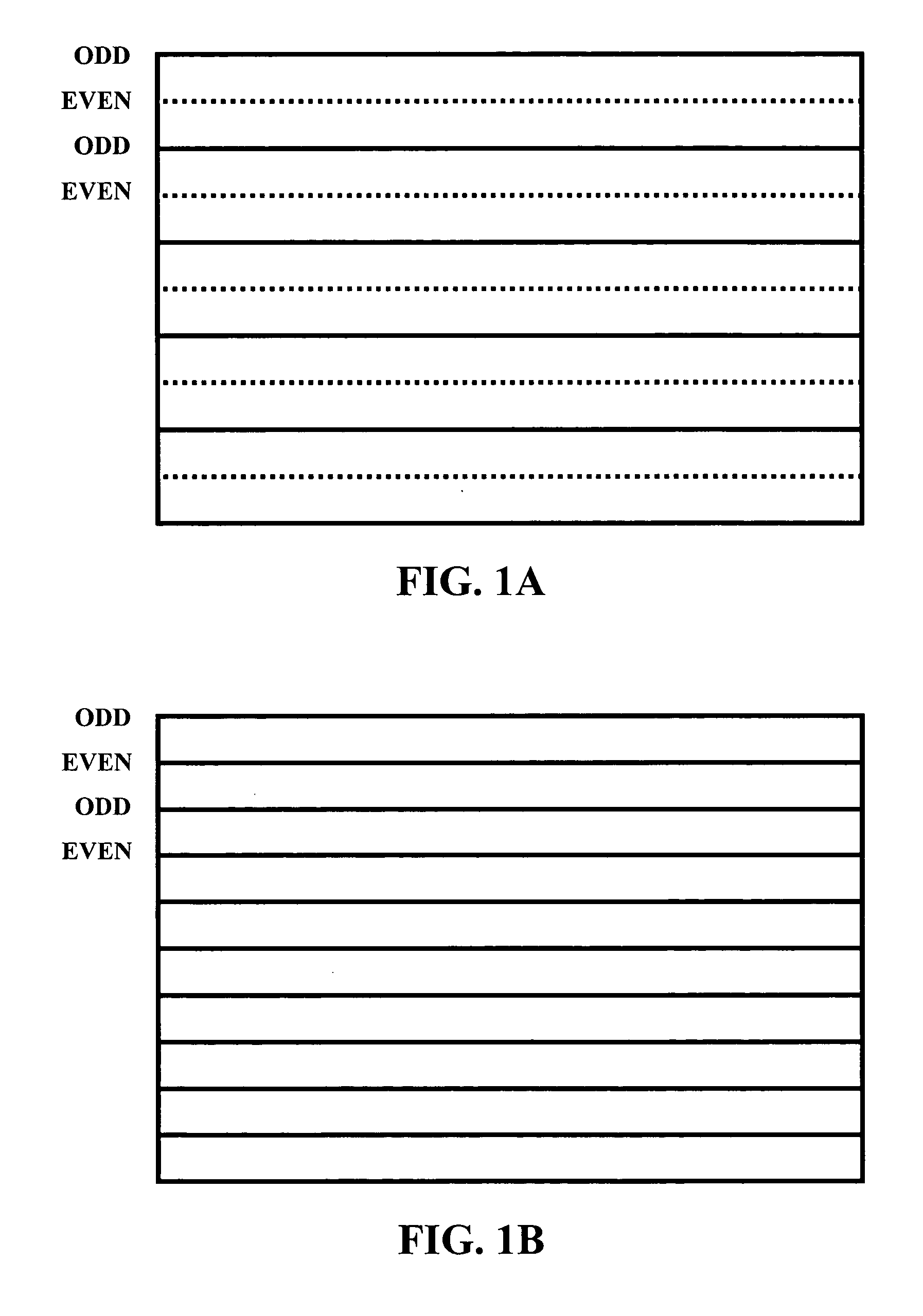Display image enhancement apparatus and method using adaptive interpolation with correlation
- Summary
- Abstract
- Description
- Claims
- Application Information
AI Technical Summary
Benefits of technology
Problems solved by technology
Method used
Image
Examples
Embodiment Construction
[0036] Reference will now be made in detail to the preferred embodiments of the present invention, examples of which are illustrated in the accompanying drawings.
[0037] As shown in FIG. 3, the display image enhancement device according to an exemplary embodiment of the present invention includes memory elements 1 that continuously receive and store data chains, i.e., windows of input image pixel data. For example, the memory elements 1 may include a line buffer or another type of data storage element. In the exemplary embodiment shown in FIG. 4, values for each pixel in a window of 15 pixels by 2 pixels (pixels B7-A7 and P7-N7) are stored in memory elements 1, at a given time, for measurement and interpolation to determine the value for an additional pixel (pixel X) to be placed in the center of the window. Windows having sizes other than 15 by 2 may also be used. Also, depending on the requirements of the timing logic and any filtering logic, input image data can be pipe-lined and...
PUM
 Login to View More
Login to View More Abstract
Description
Claims
Application Information
 Login to View More
Login to View More - R&D
- Intellectual Property
- Life Sciences
- Materials
- Tech Scout
- Unparalleled Data Quality
- Higher Quality Content
- 60% Fewer Hallucinations
Browse by: Latest US Patents, China's latest patents, Technical Efficacy Thesaurus, Application Domain, Technology Topic, Popular Technical Reports.
© 2025 PatSnap. All rights reserved.Legal|Privacy policy|Modern Slavery Act Transparency Statement|Sitemap|About US| Contact US: help@patsnap.com



